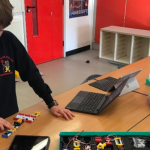Teaching kids fun STEM facts and interesting science facts is a great way to get children excited about science. This offers them an opportunity to obtain brief and memorable information on how the world works and why things are the way they are – from planets to plants, to animals and the human body!
In our rapidly changing world, STEM holds great potential for the future, and definitely seems like it is here to stay. With the right approach and activities, you can help your kids engage with STEM learning from young ages.
We have prepared a list of fun facts about STEM that you can share with your children to astonish them and spark interest in different fields. We hope you enjoy our selection of random science facts!

Fun Facts About Space
- Milky Way, our galaxy, holds 100-400 billion stars; universe has 170 billion galaxies!
- Sun’s vastness fits 1 million Earths.
- Plane to Sun: 20-year journey from Moon.
- Venus sizzles at 450°C, hottest in our system.
- Galaxies host supermassive black holes at cores.
- Neutron star’s teaspoon: 6 billion tons, spins 600x/sec.
- Neptune’s day: mere 16 hours.

Nature & Earth Science Facts
- Earth: 70% water, 8% volcanoes, 10% ice, 11% usable land.
- Pineapple: 2-year growth for full maturity.
- Carnivorous plants: 630 species feed on bugs, some in water.
- Elephants: 22-month pregnancy, longest among land mammals.
- Hummingbirds: World’s smallest birds, agile fliers at 200 beats/sec.
- Soil: Teaspoon holds up to 100 million bacteria.
- Climate change: Melting glaciers could raise sea levels by 82 feet, affecting cities.

Amazing Facts About the Human Body
- Body Composition: 50-65% water content.
- DNA Connection: Humans share 99% DNA; 96% genetic likeness to chimpanzees.
- Heart’s Weight: Adults’ hearts weigh 250-300g; babies’ about 100g.
- Vision Marvel: Human eye detects 10 million colors and distinguishes between them.
- Oxygen Priority: Brain receives 25% of body’s oxygen, influencing clarity and focus.

Interesting Facts About Computer Science & Technology
- Early Computers: 1940s birthed electronic computers, room-sized; ENIAC, 1945, weighed 27 tons.
- Ancient Inspiration: Leonardo da Vinci’s 1495 sketch: early human-like robot concept.
- Turing’s Vision: Alan Turing’s 1936 paper introduced modern computer idea in “On Computable Numbers.”
- Gaming Boost: Moderation in video gaming enhances analytical thinking, memory, and spatial orientation.
- Internet Insights: Global “network of networks” uses wires and wireless tech to interconnect computers.

Facts About Women in STEM
- Space Trailblazer: Sally Ride, first US woman in space on June 18, 1983.
- Coding Pioneer: Margaret Hamilton led Apollo 11 code for Moon landing.
- Skyward Soarer: Amelia Earhart’s milestones: Hawaii-US solo flight, Atlantic solo over 14,000 feet.
- GPS Visionary: Gladys West’s algorithmic work shapes modern GPS tech.
- Language Innovator: Grace Hopper introduced COBOL, English-based programming.
- Nursing Pioneer: Florence Nightingale transformed Crimean War death rate from 42% to 2%.
Let’s explore more science facts for your children now!
Rachel Turner 🖋️
Content Creator and Educator



